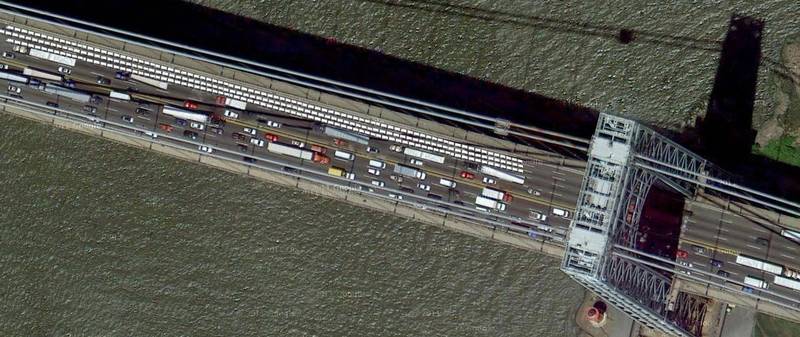Let’s Set Some Standards for Micro Cargo
As zero carbon cargo efforts are progressing, it is becoming more apparent that the lowest hanging fruit is in the last few miles. This is where a large amount of carbon is expended in delivering small parcels to stores and consumers’ doors.
This is particularly apparent in dense pack cities like New York City, where delivery vans clog streets and water crossings. The NYC Economic Development Commission recently issued a Request For Expression of Interest in waterborne micro cargo delivery. The RFEI is asking for equipment manufacturers, cargo shippers, site developers and logistics providers to submit their wares for further evaluation by NYCEDC in an effort to move cargo by water to dedicated shore loading and discharge points along its incredibly long waterfront.
I am intimately familiar with many of the potential players in this field, and there is a lot of interesting stuff out there ranging from cargo bikes, to EV cargo vessels, to specialty cargo providers. I work very closely with Apollonia, a sailing vessel that is delivering a variety of cargo along the Hudson river. Apollonia is doing an amazing job at opening the long-forgotten New York harbor region waterborne trade, but even my friends on Apollonia agree that they are trailblazers and not the final solution for this trade.
For this trade to advance to a sustainable and significant portion of last mile cargo delivery, more advanced approaches will need to be developed.
In New York City this will mean a deeply integrated and intermodal approach and intermodality requires standards. Proper standards will result in massive increases in efficiency and therefore massive opportunities to reduce carbon emissions. We know this works because in longer haul cargo delivery we have such a standard, the ISO shipping container.
It almost boggles the mind that the success of the ISO container is effectively based on only one standard: 8 feet wide. Today there are other standardization bits and pieces, but they do not affect the efficiency of the entire system. Only by agreeing that all cargo will be packed in 8 feet wide boxes did we achieve the incredible efficiency of intermodal transportation.
Before that, cargo transportation was inefficient mayhem, and if we do not set a standard for micro cargo we will have to live through that level of mayhem with micro cargo or, worse, may never achieve critical mass in these systems and fail to develop micro cargo and continue to struggle with last mile inefficiencies.
So please, let’s set a micro cargo standard width. I have been thinking about this subject for more than a decade and just like the reason for 8 foot standard (basically railroad car and truck widths, which are mythically reported to be related to the width of two horse’s asses) there is a relatively obvious answer for micro cargo too. That width is roughly two human asses plus the additional width of the packaging.
That adds up to about 5 feet. The actual width is not terribly important, but it needs to be a single fixed width and having spent a fair amount of time on this issue I am pretty certain that 5 feet is the proper width.
We know that 8 feet wide is too wide in micro cargo delivery. The mathematical analysis of the inability of 8 feet wide to function well in micro cargo delivery is complex, but it only takes a little visualization to realize that if I pack an 8 feet wide box with stuff that needs to be delivered door to door in NYC and carry at maximum, parcels the size of a pallet, I spend a lot of time blocking traffic with a mostly empty truck. Stepping down to a smaller size, and especially a smaller width relieves that issue. One may argue that one human with a bigger truck can deliver more cargo than one human with a smaller truck, but in a city like NYC even that argument holds no water, especially if NYC water can be crossed at higher speeds by avoiding tunnels and bridges and using the water itself.
NYCEDC, and many others, realize that at a gut level, and that is why NYCEDC is looking at waterborne micro cargo delivery. Such a system uses the water itself as a bypass intersection to deliver cargo point to point without delays, and as long as there are lots of waterfront delivery points, the delivery can be done in smaller moving units. Those smaller moving units can move more quickly to their final destination and thereby increase efficiencies and reduce costs even if human drivers are still needed. These 5 feet wide units can slip into spots that 8 wide foot trucks cannot. When double parked, and with minor traffic lane modifications, a 5-foot-wide delivery unit prevents blockages without the need for total street surface increases.
These units fit standard shipping pallets if pallets need to be moved, and also fit most human objects, such as beds, furniture and appliances, since these need to fit through human sized doors. These five feet wide units are loaded on cellularized ships whether as rolling units or standard containers, and can be loaded and unloaded very quickly thereby reducing waterfront infrastructure footprints and costs.
These 5-foot wide units will zip through the city much faster and easier than conventional cars and if they become ubiquitous, New Yorkers will think: “Why don’t we fit our asses in those five feet wide rolling cargo units?” Then NYC parking garages realize they can fit 30 percent more cars in their parking facilities, and NYC may say: “Maybe we should reduce congestion pricing by 30 percent on five foot wide passenger cars. And why not provide dedicated five foot wide traffic lanes?”
And yes, Ladies and Gentlemen, we will have entered a beneficial transportation cycle with the ability to achieve massive system wide efficiency increases. But remember: No proper width standard, no efficient waterborne micro cargo transportation system.
Somebody needs to set that standard. It costs nothing. NYCEDC, and the region’s tax payers, are you listening? Set that standard before it is too late! It is free and will save you tons of money and carbon emissions!
For each column I write, MREN has agreed to make a small donation to an organization of my choice. For this column I nominate the Waterfront Alliance, www.waterfrontalliance.org. This organization has been fighting for waterfront access in all its forms since 2000.


